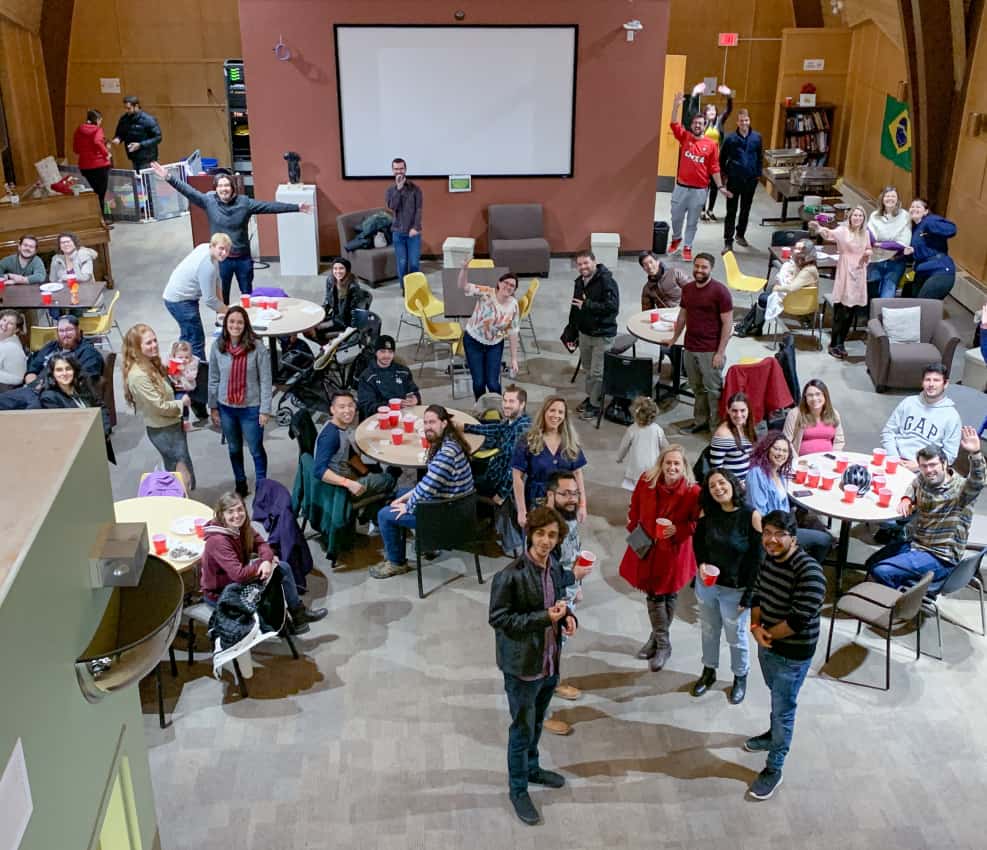
Brazilians all over the world felt the tragedy of the burning of the National Museum of Brazil in September 2018. Those living in Saskatoon were no different.
“It has a very special sentimental aspect for me. Since I was a small child, I knew that museum and I was fascinated,” Elizabeth Freire, a founding member of the Brazilian Association of Saskatoon said. “The museum was an important part of who we are.”
Freire and many other members of the Saskatoon Brazilian community joined the Brazilian Students’ Association of the University of Saskatchewan in planning a way to support the restoration of the national museum. After four months of organizing, the group raised $1,325 on Sept. 28 with an on-campus fundraising event featuring traditional Brazilian food and a raffle. The prizes were donated by supporting organizations like the Saskatoon Symphony Orchestra, the Royal Saskatchewan Museum and Remai Modern.
Moisés de Jesus Ferreira Silva, a graduate student and BRASA U of S organizer, says the event went off without a hitch.
“It was the best energy ever. We had people of all ages, not just students and it was amazing to see everybody together having a great time with good food and good music,” Ferreira said. “But it was not only about fun, everybody was there to help a great cause.”
As students, Ferreira says the fire was particularly a tragedy for the group from an academic standpoint. The national museum was the main natural history museum in Latin America. The 200-year-old building housed a collection of more than 20 million artifacts, an estimated 90 per cent of which were destroyed in the 2018 fire. The collection included the oldest human skeleton ever found in the Americas.
“This is a cause that speaks a lot to us, especially as students. The National Museum of Brazil was not only a museum, but also a research institution,” Ferreira said. “Nobody died, fortunately, but lots of people spent their whole lives collecting and studying these artifacts, so it was many many lives lost to this tragedy.”
“Imagine spending your whole career studying an object and overnight it’s not there anymore,” José Alvim Berkenbrock, a graduate student and BRASA U of S organizer added.
The restoration process has received some support internationally, as have the scientists who lost their lives’ work in the museum. The Smithsonian Institution in the United States, for example, offered 14 of these scientists use of the Smithsonian’s labs to continue their research.
However, the help has not been enough. Around May, when BRASA first started planning the event, only $280,000 had been raised for the Museum’s restoration; around 1 per cent of what the total project will cost. At the time, the destructive fire in the Notre Dame Cathedral of France had only happened a few days earlier but had already garnered much greater international support with a $900,000 raised in donations.
It was this comparative lack of support for the restoration of a Brazilian museum of national and global importance that prompted the student group to action.
“In a short span of time, [Notre Dame was] able to raise a huge amount of money. That didn’t happen with our museum,” Ferreira said. “That’s why we thought about doing our small part here as the Brazilian community to help in the reconstruction process.”
The fundraiser’s goal was “to raise money of course, but it was also to raise awareness,” according to Berkenbrock. The group seems to have achieved this. The event was reportedly attended not only by Brazilian students and community members, but also by people who found out about the national museum through BRASA. The group even received ticket-price donations from people who were not able to attend but still wanted to support the cause.
Freire says the Brazilian Association of Saskatoon was happy to help the students in the fundraiser. She adds that the event showed what people can do for the causes that matter to their countries even from afar.
“What we learned in this process is that lots of Brazilian groups are doing these mini efforts to send money to Brazil. It is a work of a million of us,” Freire said. “It shows that we can be far away from our country, but we think about it.”
—
Ana Cristina Camacho/ News Editor
Photo: Alejandra Fonseca, Vice-President Student Affairs (GSA)